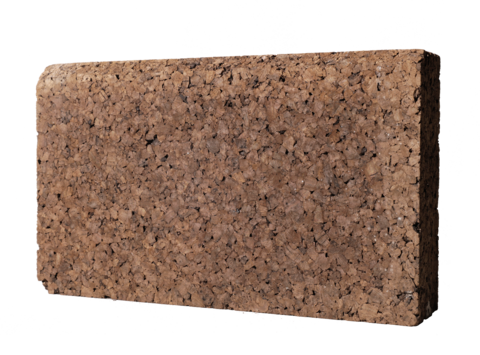cork facade
Ecological Data per mass per volume
| Subject | Value | Unit |
|---|---|---|
| Primary Energy, non-renewable | 1.4 | MJ/kg |
| Global Warming Potential | -99.5 | kg CO2-eq/kg |
(show values per volume) (show values per mass)
Life Cycle Transition
About the Product

Cork is a natural resource that occurs as the bark of cork oaks and can be harvested every nine to 14 years after its first peeling. The bark is usually harvested, sorted and dried manually. It is then crushed in a mechanical process.
In order to produce a cork façade, resin-rich cork grist is pressed as natural cork granulate under high pressure and a temperature of over 350°. The secondary cork granulate can be processed as a by-product of bottle cork production. Due to its compactness, the insulating material is weather-resistant and increases its heat and sound insulation properties. Compared to other insulation boards made from renewable raw materials, the energy consumption in the manufacturing process is low and the required energy can be generated partly by burning bark residues and cork dust.
Cork as exterior wall insulation has an estimated life of about 40 years, depending on the application. The cork boards retain their properties over the entire life cycle. In addition, they are free of toxic substances and therefore pose no risk to health.
Cork boards are completely recyclable. They are used as visible exterior façade panels. The facade panels are screwed onto a substructure.
Ziro’s visible facade panels are made of 100% cork without any additonal binders. The panels are rot resistant but recyclable.
Manufacturer: ZIRO